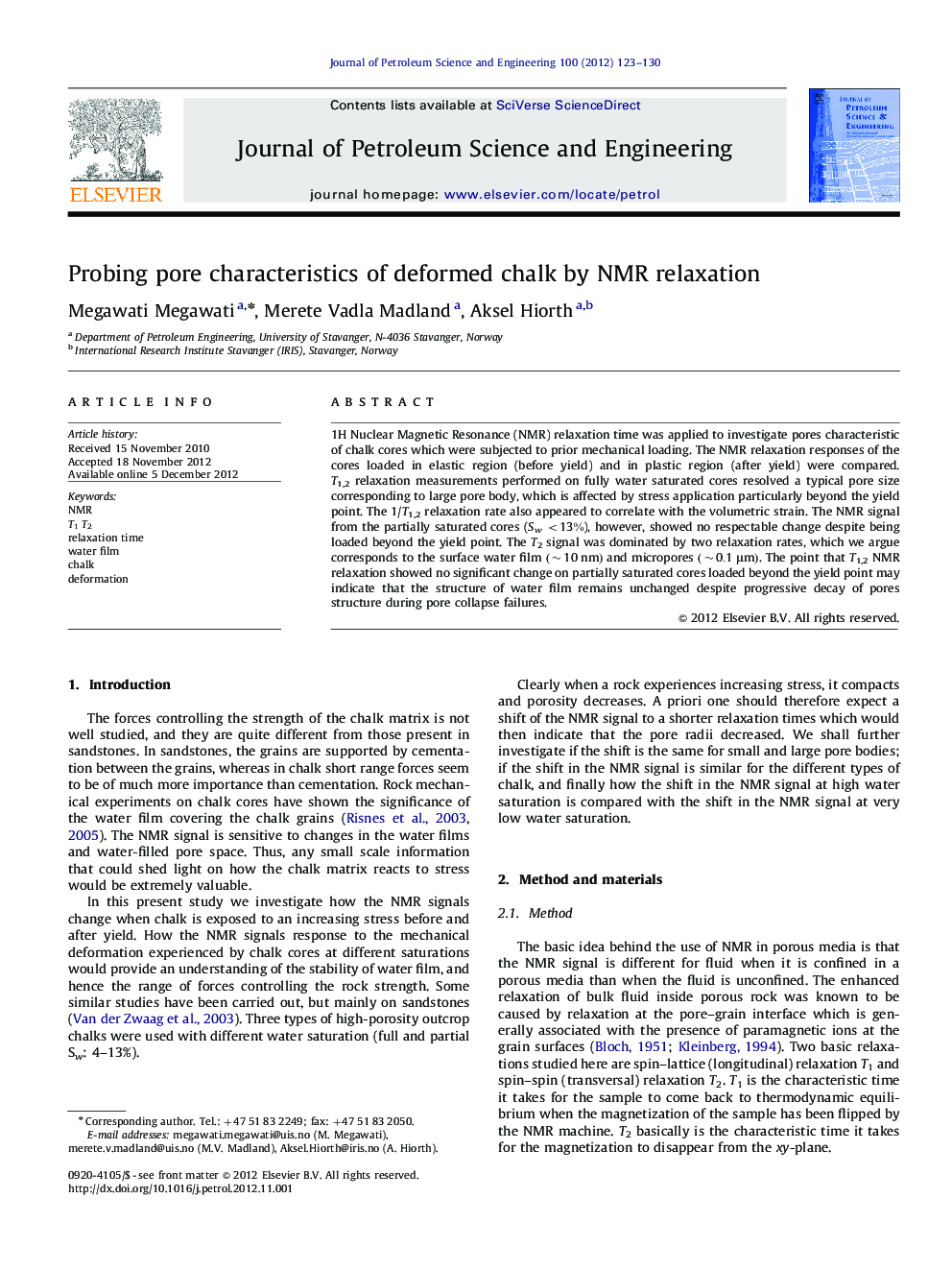| Article ID | Journal | Published Year | Pages | File Type |
|---|---|---|---|---|
| 1755362 | Journal of Petroleum Science and Engineering | 2012 | 8 Pages |
1H Nuclear Magnetic Resonance (NMR) relaxation time was applied to investigate pores characteristic of chalk cores which were subjected to prior mechanical loading. The NMR relaxation responses of the cores loaded in elastic region (before yield) and in plastic region (after yield) were compared. T1,2 relaxation measurements performed on fully water saturated cores resolved a typical pore size corresponding to large pore body, which is affected by stress application particularly beyond the yield point. The 1/T1,2 relaxation rate also appeared to correlate with the volumetric strain. The NMR signal from the partially saturated cores (Sw<13%<13%), however, showed no respectable change despite being loaded beyond the yield point. The T2 signal was dominated by two relaxation rates, which we argue corresponds to the surface water film (∼10nm) and micropores (∼0.1μm). The point that T1,2 NMR relaxation showed no significant change on partially saturated cores loaded beyond the yield point may indicate that the structure of water film remains unchanged despite progressive decay of pores structure during pore collapse failures.
► Time relaxation distributions from the larger pores are sensitive to stress application. ► T2 distributions from partially saturated chalk are characterized by two time scales. ► T1 and T2 relaxations show no significant change on partially saturated cores loaded beyond the yield. ►The forces controlling the strength of the chalk are rather of short range, in the scale of 1 nm.
